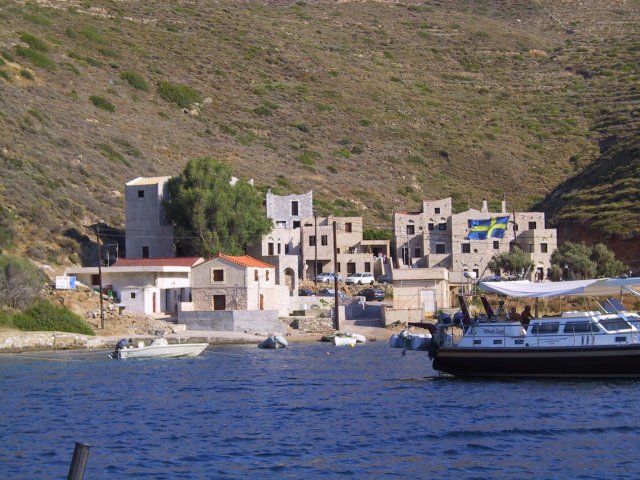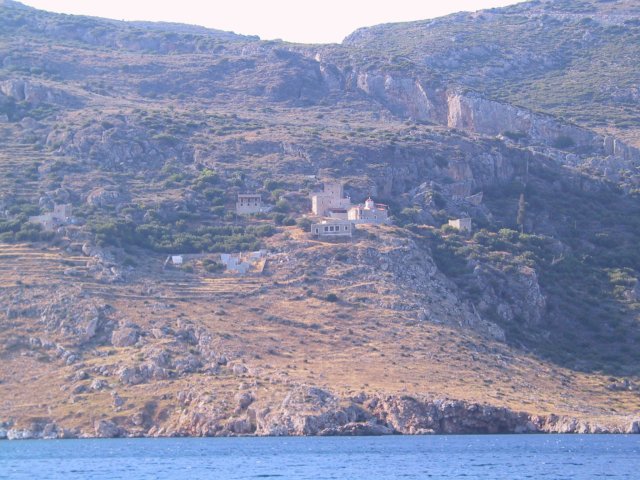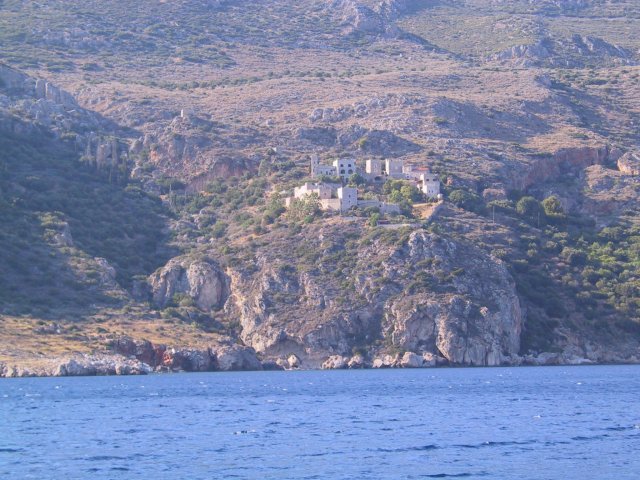The Mani Region
 The region referred to as the Mani covers the central peninsula in the south of Peloponnese. For centuries, the Mani were a law unto themselves, renowned for their fierce independence and resentment of any attempt to govern them.
The region referred to as the Mani covers the central peninsula in the south of Peloponnese. For centuries, the Mani were a law unto themselves, renowned for their fierce independence and resentment of any attempt to govern them.
Today, the Maniots are regarded by other Greeks as independent, royalist and right wing. But don't be deterred by descriptions of the Maniots as hostile, wild and hard people, contact with the outside world and lack of feuding have mellowed them. The Maniots are as friendly and hospitable as Greeks elsewhere, despite the fierce appearance of some older people who dress like the Cretans and offer fiery raki (a spirit) as a gesture of hospitality.
 The Mani is generally divided into the Messinian Mani (also called the outer Mani) and the Lakonian (or inner) Mani. Messinian Mani starts southeast of •Kalamata and runs south between the coast and the Taygetos Mountains, while Lakonian Mani covers the rest of peninsula south of Itilo. Such was the formidable reputation of the inhabitants of remote inner Mani that foreign occupiers thought they were best left alone.
The Mani is generally divided into the Messinian Mani (also called the outer Mani) and the Lakonian (or inner) Mani. Messinian Mani starts southeast of •Kalamata and runs south between the coast and the Taygetos Mountains, while Lakonian Mani covers the rest of peninsula south of Itilo. Such was the formidable reputation of the inhabitants of remote inner Mani that foreign occupiers thought they were best left alone.
The Mani has no significant ancient sites, but it well compensates with medieval and later remains, bizarre tower settlements -particularly in the inner Mani - built as refuges from clan wars from the 17th century on, and magnificent churches, all enhanced by the distant presence of the towering peaks of the Taygetos Mountains.
 History – The people of the Mani regard themselves as direct descendants of the Spartans. After the decline of Sparta, citizens loyal to the principles of Lycurgus, founder of Sparta's constitution, chose to withdraw to the mountains rather than serve under foreign masters. Later, refugees from occupying powers joined these people who became known as Maniots, from the Greek word 'mania'. The Maniots claim they are the only Greeks not to have succumbed to foreign invasions. This may be somewhat exaggerated but the Maniots have always enjoyed a certain autonomy and a distinctive lifestyle.
History – The people of the Mani regard themselves as direct descendants of the Spartans. After the decline of Sparta, citizens loyal to the principles of Lycurgus, founder of Sparta's constitution, chose to withdraw to the mountains rather than serve under foreign masters. Later, refugees from occupying powers joined these people who became known as Maniots, from the Greek word 'mania'. The Maniots claim they are the only Greeks not to have succumbed to foreign invasions. This may be somewhat exaggerated but the Maniots have always enjoyed a certain autonomy and a distinctive lifestyle.
Until independence, the Maniots lived in clans led by chieftains. Fertile land was so scarce that it was fiercely fought over, Blood feuds were a way of life and families constructed towers as refuges. Kita was the site of the last great inter-family feud recorded in the Mani. The feud erupted in 1870 and required the intervention of the army, complete with artillery, to force a truce. The Turks failed to subdue the Maniots, who eagerly participated in the War of |independence. But, after 1834, although reluctant to relinquish their independence, they became part of the new kingdom.
Grey rock, mottled with defiant clumps of green scrub, characterises the bleak mountains of inner Mani. Land that's suitable for cultivation is at a premium, and even that is incapable of supporting much more than a few stunted olives and figs. A curious anomaly is the profusion of wild flowers that mantle the valleys in spring, exhibiting nature's resilience by sprouting from the rocks.
The indented coast's sheer cliffs plunge into the sea and rocky outcrops shelter pebbled beaches. This wild and barren landscape is broken only by austere and imposing stone towers, mostly abandoned, but still standing sentinel over the region. Restoration of Maniot buildings is increasing and many refugee Albanians, who are fine stonemasons, have been engaged on these projects.